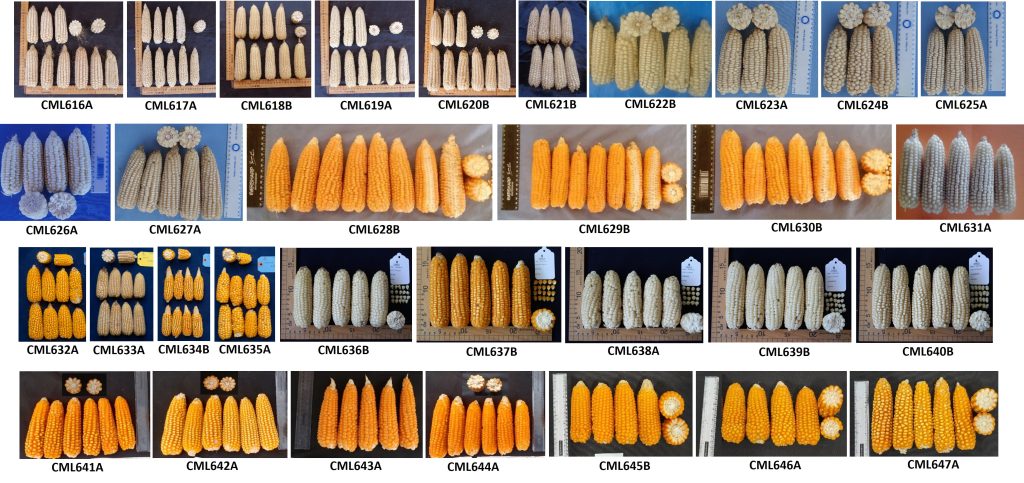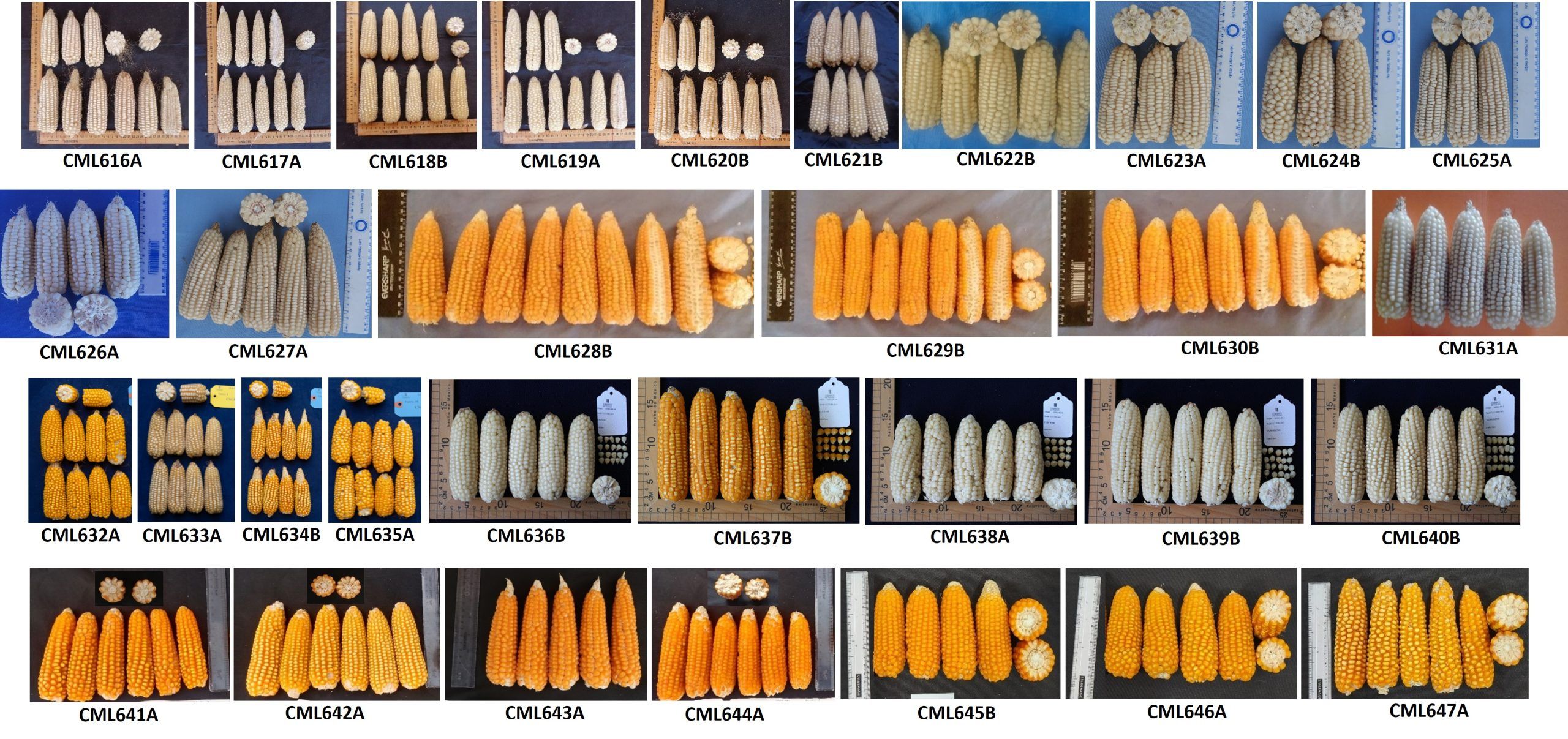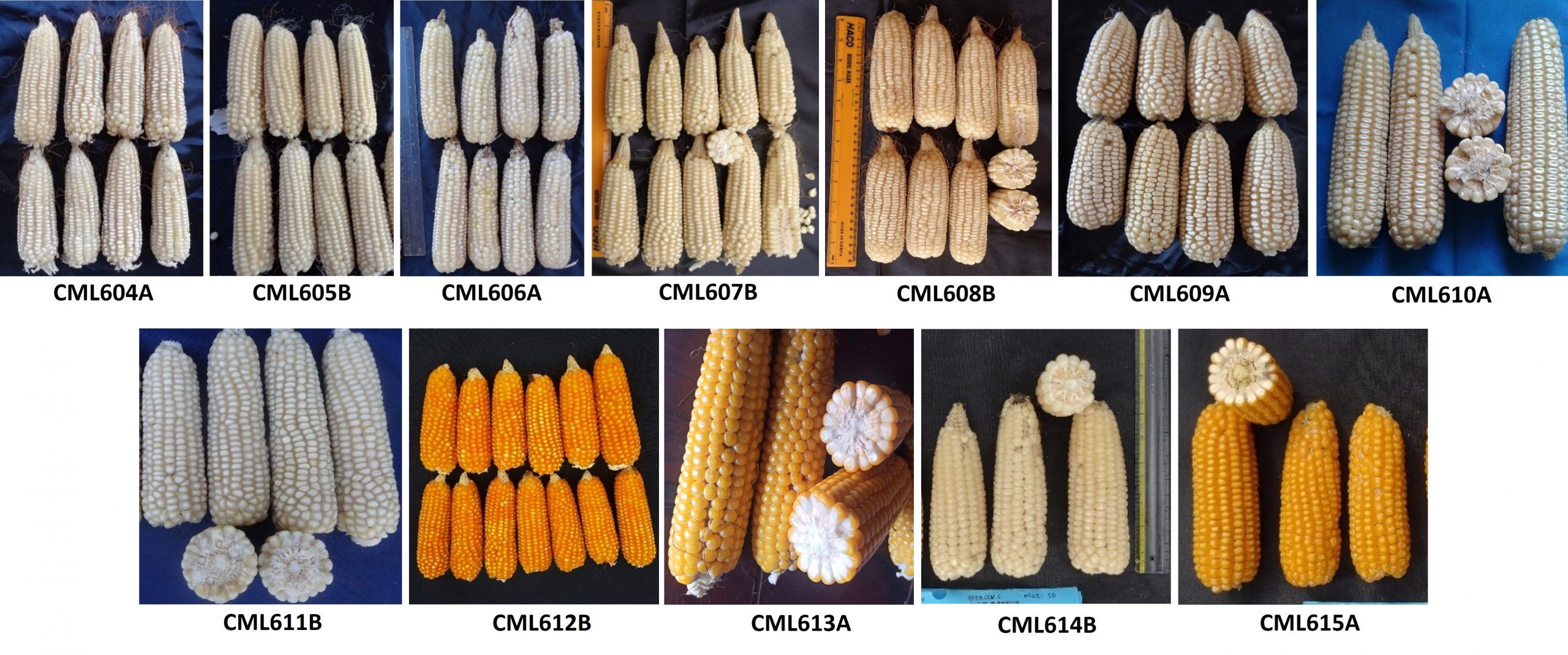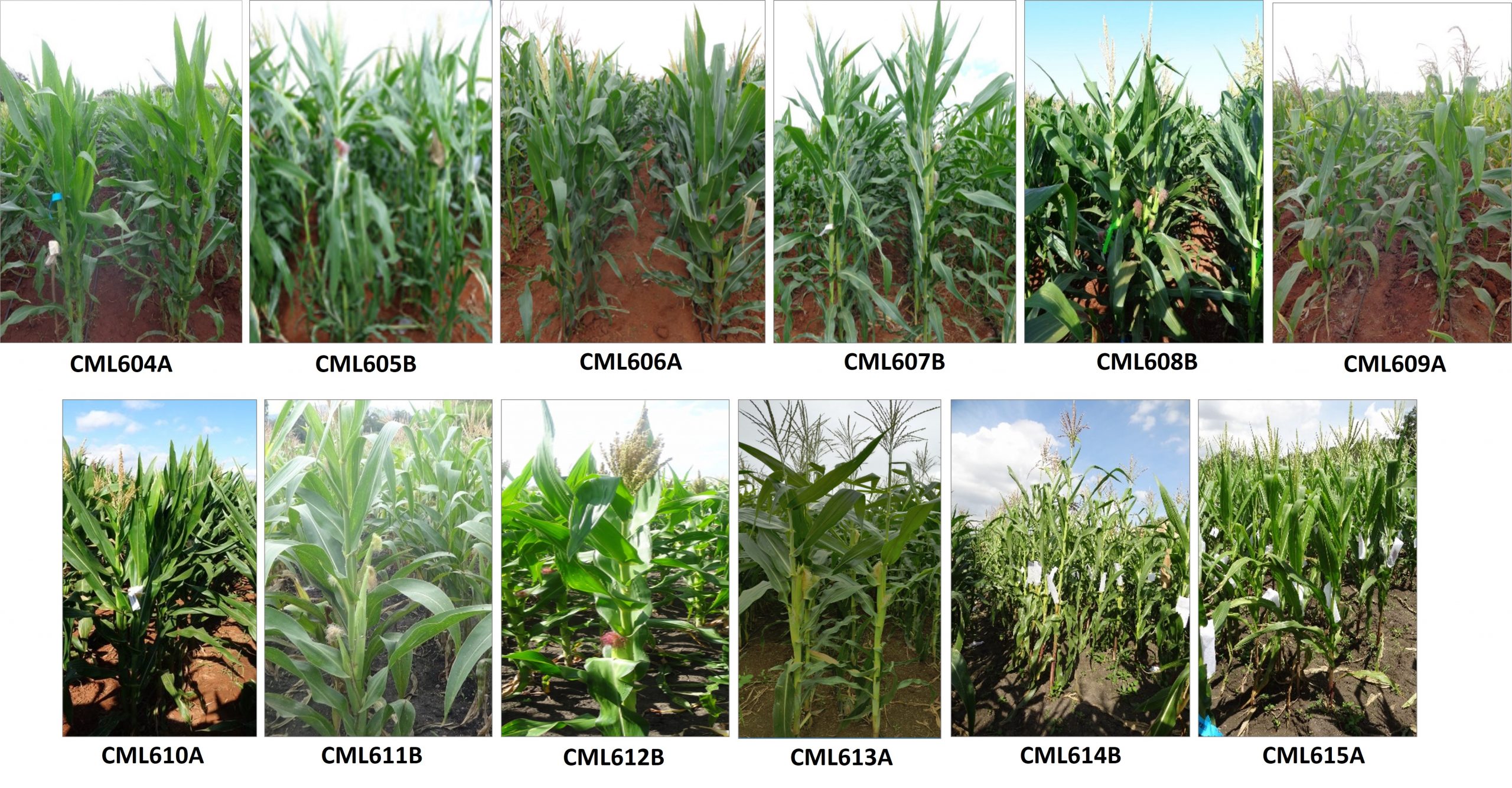CIMMYT releases 32 new elite maize lines

CIMMYT is pleased to announce the release of a set of 32 new CIMMYT maize lines (CMLs). These maize lines have been developed by CIMMYT’s Global Maize Program by a multi-disciplinary team of scientists in sub-Saharan Africa, Latin America, and Asia. The lines have diverse trait combinations and are suitable for the tropical/subtropical maize production environments targeted by CIMMYT and partner institutions.
CMLs are freely available to both public and private sector breeders worldwide under the standard material transfer agreement (SMTA).
CIMMYT seeks to develop improved maize inbred lines for different product profiles, with superior yield performance, multiple stress tolerance, and enhanced nutritional quality. CMLs are released after intensive evaluation in hybrid combinations under various abiotic and biotic stresses, besides optimum (non-stress) conditions in the target population of environments. Suitability as either female (seed) or male (pollen) parent is also evaluated. As done in the last announcement of CMLs in 2021, to increase the utilization of the CMLs in the maize breeding programs of the partner institutions, all the new CMLs are tested for their heterotic behavior and assigned to specific heterotic groups of CIMMYT: A and B.
The release of a CML does not guarantee high combining ability or per se performance in all the environments; rather, it indicates that the line is promising or useful as a parent for pedigree breeding or as a potential parent of hybrid combinations for specific mega-environments. The description of the lines includes heterotic group classification, along with information on their specific strengths and their general combining ability with some of the widely used CMLs or CIMMYT coded lines under different environments.
More information:
Summary of the characteristics: CIMMYT maize lines CML616A to CML647A (PDF)
Pedigree and characterization data of all the CMLs released to date, including the latest set (CIMMYT Research Data repository).
Seed for these new set of CMLs will be available from November 1, 2023. A limited quantity of seed of the CMLs can be obtained by sending a request to the CIMMYT germplasm bank via this link: https://staging.cimmyt.org/resources/seed-request/ or contact, a.chassaigne@cgiar.org.
Please contact for any further details regarding the released CMLs:
Dr B.M. Prasanna, Global Maize Program Director, CIMMYT & OneCGIAR Maize Breeding Lead (b.m.prasanna@cgiar.org)





